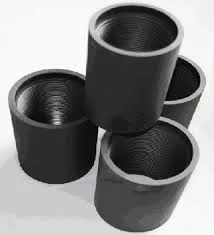- Afrikaans
- Albanian
- Amharic
- Arabic
- Armenian
- Azerbaijani
- Basque
- Belarusian
- Bengali
- Bosnian
- Bulgarian
- Catalan
- Cebuano
- Corsican
- Croatian
- Czech
- Danish
- Dutch
- English
- Esperanto
- Estonian
- Finnish
- French
- Frisian
- Galician
- Georgian
- German
- Greek
- Gujarati
- Haitian Creole
- hausa
- hawaiian
- Hebrew
- Hindi
- Miao
- Hungarian
- Icelandic
- igbo
- Indonesian
- irish
- Italian
- Japanese
- Javanese
- Kannada
- kazakh
- Khmer
- Rwandese
- Korean
- Kurdish
- Kyrgyz
- Lao
- Latin
- Latvian
- Lithuanian
- Luxembourgish
- Macedonian
- Malgashi
- Malay
- Malayalam
- Maltese
- Maori
- Marathi
- Mongolian
- Myanmar
- Nepali
- Norwegian
- Norwegian
- Occitan
- Pashto
- Persian
- Polish
- Portuguese
- Punjabi
- Romanian
- Russian
- Samoan
- Scottish Gaelic
- Serbian
- Sesotho
- Shona
- Sindhi
- Sinhala
- Slovak
- Slovenian
- Somali
- Spanish
- Sundanese
- Swahili
- Swedish
- Tagalog
- Tajik
- Tamil
- Tatar
- Telugu
- Thai
- Turkish
- Turkmen
- Ukrainian
- Urdu
- Uighur
- Uzbek
- Vietnamese
- Welsh
- Bantu
- Yiddish
- Yoruba
- Zulu
Understanding the Functionality and Importance of Vacuum Hose Couplings in Automotive Systems
Understanding Vacuum Hose Couplings An Essential Component in Modern Systems
Vacuum hose couplings play a crucial role in various industries, serving as connectors for systems that rely on vacuum pressure. These couplings are essential in applications ranging from automotive engines to industrial machinery and HVAC systems. Understanding their function, types, and maintenance can empower users to maintain efficient operations in their respective fields.
What is a Vacuum Hose Coupling?
A vacuum hose coupling is a device that connects two or more vacuum hoses, allowing for a seamless transfer of vacuum pressure. These couplings often feature specific designs that facilitate easy assembly and disassembly, making them incredibly practical for maintenance and upgrades. Depending on their application, vacuum hose couplings can vary significantly in size, material, and configuration.
Types of Vacuum Hose Couplings
1. Barbed Couplings These are among the most common types of vacuum hose couplings. They feature small barbs along the fitting, which grip the hose securely when pressed on. Barbed couplings are often made from plastic or metal and are suitable for lower-pressure applications.
2. Quick Connect Couplings Designed for easy connection and disconnection, quick connect couplings can be rapidly joined or separated without the need for tools. This type, often used in environments requiring frequent hose changes, minimizes downtime and enhances workflow efficiency.
3. Flanged Couplings These couplings consist of two flanged ends that bolt together, providing a secure and leak-proof connection. Flanged couplings are generally used in applications where high vacuum levels are necessary or where hoses are subject to significant pressure variations.
vacuum hose coupling

4. Clamped Couplings Made using clamps that secure the hose onto the fitting, clamped couplings are ideal for heavier, rigid hoses. They are common in robust industrial settings where durability is paramount.
5. Sleeve Couplings These couplings feature a sleeve that slips over the ends of two hoses, joined typically by a tightening mechanism. They provide a flexible connection that can accommodate varying hose diameters.
Importance of Proper Selection and Maintenance
Choosing the right vacuum hose coupling is essential for ensuring optimal performance within a vacuum system. Users should consider factors such as the system's working pressure, the type of medium being transported, and the environmental conditions. For example, corrosive or high-temperature applications may require specific materials such as stainless steel or high-grade plastics.
Regular maintenance of vacuum hose couplings is also crucial to ensure long-term functionality. Over time, wear and tear can lead to leaks, reduced efficiency, or even system failures. Routine inspections should include checking for cracks, signs of wear, and ensuring that connections are secure. Additionally, it is advisable to replace old or damaged couplings promptly to prevent further system deterioration.
Conclusion
Vacuum hose couplings may be small components, but their impact on system performance cannot be overstated. Whether in a laboratory, automotive, or manufacturing setting, these couplings ensure that vacuum systems operate efficiently and reliably. By understanding their various types and ensuring proper selection and maintenance, users can optimize their operations and avoid costly downtimes. As technology continues to evolve, the importance of these connectors in supporting various industrial processes remains steadfast, highlighting their role as an essential piece of the vacuum system puzzle.
-
Tubing Pup Joints: Essential Components for Oil and Gas OperationsNewsJul.10,2025
-
Pup Joints: Essential Components for Reliable Drilling OperationsNewsJul.10,2025
-
Pipe Couplings: Connecting Your World EfficientlyNewsJul.10,2025
-
Mastering Oilfield Operations with Quality Tubing and CasingNewsJul.10,2025
-
High-Quality Casing Couplings for Every NeedNewsJul.10,2025
-
Boost Your Drilling Efficiency with Premium Crossover Tools & Seating NipplesNewsJul.10,2025







